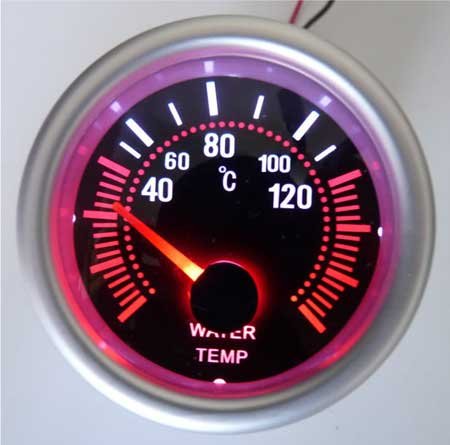
How To React When Your Temperature Gauge Spikes?
If your engine's suddenly got a fever, quick action will often save the situation, but never ever, ignore the symptoms!!
Here's what to do when things start to flare.
Any number of things can be the cause of your engine's temperature spike. Some are a serious threat, others are not. The worst possibilities could be loss of compression because of damaged rings or valves, lubrication issues, main-bearing problems, and misfiring. Most of these normally require a good mechanic and that may be pricey to fix.
But very often, a spike in temperature signals a temporary malfunction, one that will have few long-term consequences if quickly remedied.
1. Check for cooling water coming out of your exhaust or the "pee hole" in the outboard.
If the volume of water has diminished or if there's white steam (which may look like extra exhaust), not enough water is going through the engine to cool it. You'll need to work through the next few items to find the problem. But if the cooling water is spewing out normally, check your voltage. A voltage change at the gauge, as when you turn on the instrument-panel lights, could, in some installations, cause a slight increase in the temperature reading that has nothing to do with the engine.
2. Turn off the engine immediately, if safe to do so.
Do not restart until it cools down to within normal operating temperatures. Usually the engine temperature will continue to increase after shutdown because it's no longer getting any cooling water. Restarting at the higher temperature may ruin the engine. Always wait until the engine has cooled before you work on it.
3. Check for obstructions.
When debris blocks the cooling water intake or clogs the strainer and restricts water flow, failure to remedy the problem immediately can result in the destruction of the impeller and other more serious problems. Debris in a raw-water strainer for an inboard is easily fixed by turning off the engine, closing the thru-hull valve, and cleaning the strainer. An inboard engine may suck a large piece of debris, such as a plastic bag, onto your strainer outside the hull, particularly if you're moving slowly. On outboards, plastic or even seaweed over the cooling intake vents will prevent water from reaching the engine. Often on outboards and inboards, just shifting into reverse for a moment will clear the debris over the intake.
4. If you are on an inboard, check the V-belt.
A sudden high temperature rise can be caused by the breakage of the V-belt on an inboard with an enclosed cooling system. This will cause the freshwater recirculation pump on the forward end of the engine to stop turning. This should be easy to fix with a temporary "fits-all" belt or a spare belt if you have one.
5. Look for connection problems in the raw-water system.
In a freshwater-cooled inboard, a sudden high temperature spike could indicate a busted cooling-water hose or loose hose clamp, which has allowed a hose to back off its nipple. This will also cause flooding. Some outboards may be prone to this. Depending upon the situation, you may be able to temporarily repair a busted hose with Rescue Tape, or simply reinsert a disconnected hose on the barb and tighten the hose clamp. A failed seal on an inboard freshwater recirculation pump will also result in serious water loss and high temperature and probably require a tow.
6. Clean the injection nipple.
On many inboard engines, raw cooling water is injected into the exhaust at the riser after passing through the heat exchanger(s). Often, these clog over time from corrosion and heating of organic material in the water. This diminishes raw-water flow. Remove the hose and clean any buildup inside the injection nipple. Take care not to damage the pipe, especially if it has corroded.
7. Make sure there's nothing on the bottom slowing you down.
A bad growth of barnacles and weeds, as can quickly occur in warm, nutrient-rich waters, can increase the resistance of the boat moving through the water and lead to slightly higher temperatures over time. Snagging a crab or lobster pot on your rudder can do the same thing. If you're losing speed as the temperature rises, a dive to clean your bottom or running gear may be all you need to do. Make sure it's safe, the engine is off and the key taken out of the ignition while the swimmer is in the water, there are others aboard who can help you, and that you have the requisite stamina and skills. Always carry a mask, snorkel, and flippers aboard, just for this kind of event.
If Things Are More Complicated ...
If one of the above is the problem, you should be able to deal with it and proceed with your temperature back in the normal range. If not, you're probably not going to be able to remedy the problem on the water, but you may still be able to limp home without doing permanent damage. Exactly how you limp home will depend upon what you think the problem is.